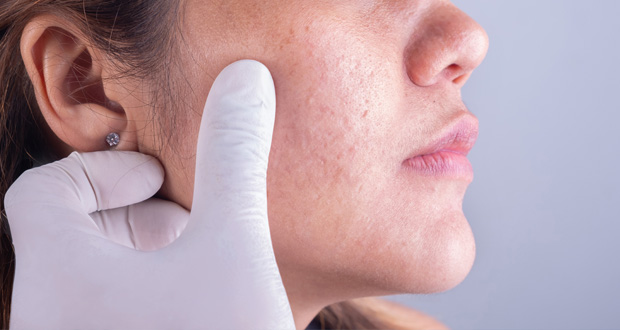Many nurses are engaging in cosmetic and beauty practices for commercial benefit, either as an employee or sole practitioner.
While a recent case involved the negligent actions of a person without nursing registration and training, it contains many salient legal points for nurses in the cosmetic industry. The court had to consider the nature of the relationship between a ‘cosmetic practitioner’ and a customer, the nature of the transaction, issues of consent, and the assumption of risk.
The uncontested facts are that in June 2017, after making payments totalling $5000, the plaintiff, Ms J, aged 33, underwent what the defendant company had represented as a very safe, non-invasive cosmetic facial treatment procedure described as a “3D skin lifting by ultrasound”. The procedure was performed by a trained ultrasound operator employee, Ms C. She was not a nurse.
The treatment commenced with the application of numbing facial cream, and then continued with heat energy being applied to Ms J’s face generated by an ultrasound device. The stated intention was to improve her appearance by delivering a low amount of focused ultrasound energy to the facial skin. As a consequence of the treatment, Ms J developed facial redness, burning, blistering, lumpiness and depigmentation to parts of her face. This caused her to suffer distress and embarrassment, for which she claimed damages in negligence.
The first issue for consideration was the nature of the relationship and consultation. The defendant company denied a patient and treatment provider relationship. The court rejected this based on the quasi-medical content and terminology that appeared in the defendant’s consultation form, which referred to treatment goals and a variety of potential procedures, including facial skin tightening, filler treatment, the use of neurotoxins, ablative laser and non-laser resurfacing treatment, dermabrasion or deep facial peels, lipoplasty to the face and neck regions, facelift, blepharoplasty, and brow lift.
Further, the form sought to record patient information about medications and other health conditions or diseases consistent with taking a patient’s medical history. It also contained spaces for notes to be made about any assessment of clinical response factors and factors relating to the assessment of face and neck skin for laxity, volume and quality.
The court found the form used language that presupposed the existence of a medical/therapeutic relationship and “gave the impression of a relationship between a patient and a treatment provider”.
Those findings were relevant to the consideration of the duty of care owed to Ms J. The duty of care owed by the therapist, Ms C, was to exercise reasonable care, skill and judgment in applying the treatment, including the duty to provide information about the nature of known associated risks of harm.
In considering the alleged negligent operation of the ultrasound device, the court noted that the aim was not to cause damage to the dermal junction of the skin layers. The treatment did not raise any communicated suggestions of skin damage of any kind, or of scarring. The court found that in light of Ms C’s certification and training, she must have been aware of the risk of facial burns if the ultrasound was delivered at too high a dose or for too long.
In finding negligence, the judge stated that the activity of promoting and charging a fee of such a large proportion ($5000) “carries with it that reasonable care would be taken … in the performance of the treatment so as not to cause avoidable damage to the appearance of the plaintiff’s face”.
Informed consent and the assumption of risks by Ms J were the last issues to be judicially considered. Noteworthy for the court was that she had not had such ultrasound treatment before and did not quite understand how it would affect her skin and therefore asked Ms C how the procedure worked.
She was told it would produce a very good result and make her skin firmer and look younger, and that the procedure was safe. During the same conversation, there was no discussion or information provided concerning any inherent risks of harm associated with the treatment.
The defendant company also relied on Ms J’s signed consultation form as evidence of consent. The court rejected this because “proffering the last page of the consultation form to [Ms J] to sign after she was already lying down supine on the treatment bench did not relevantly constitute consent to risk ... At that time, the treatment had already commenced, with the plaintiff’s facial skin having been prepared and numbed by an unidentified anaesthetising cream as the first step in the treatment”.
Further, Ms J was only asked to sign the last page for a “legal issue” that was not explained or elaborated upon at that time. In all the circumstances, this did not constitute valid consent, as the content of the form that related to risk had not been drawn to Ms J’s attention and made known to her before the treatment.
The permanent facial skin damage, hyperpigmentation, lumpiness and alteration of facial appearance, when talking or smiling, resulted in a verdict for Ms J in the sum of $24,557.
 This case contains lessons for nurses undertaking cosmetic or beauty procedures. Courts, depending on the circumstances, may assess notions of duty of care, negligence, consent and assumption of risk in line with established medico-legal case law. The same obligations and duties apply.
This case contains lessons for nurses undertaking cosmetic or beauty procedures. Courts, depending on the circumstances, may assess notions of duty of care, negligence, consent and assumption of risk in line with established medico-legal case law. The same obligations and duties apply.
Scott Trueman is a lecturer in the School of Nursing, Midwifery and Nutrition at James Cook University.
Do you have an idea for a story?Email [email protected]
 Aged Care Insite Australia's number one aged care news source
Aged Care Insite Australia's number one aged care news source

